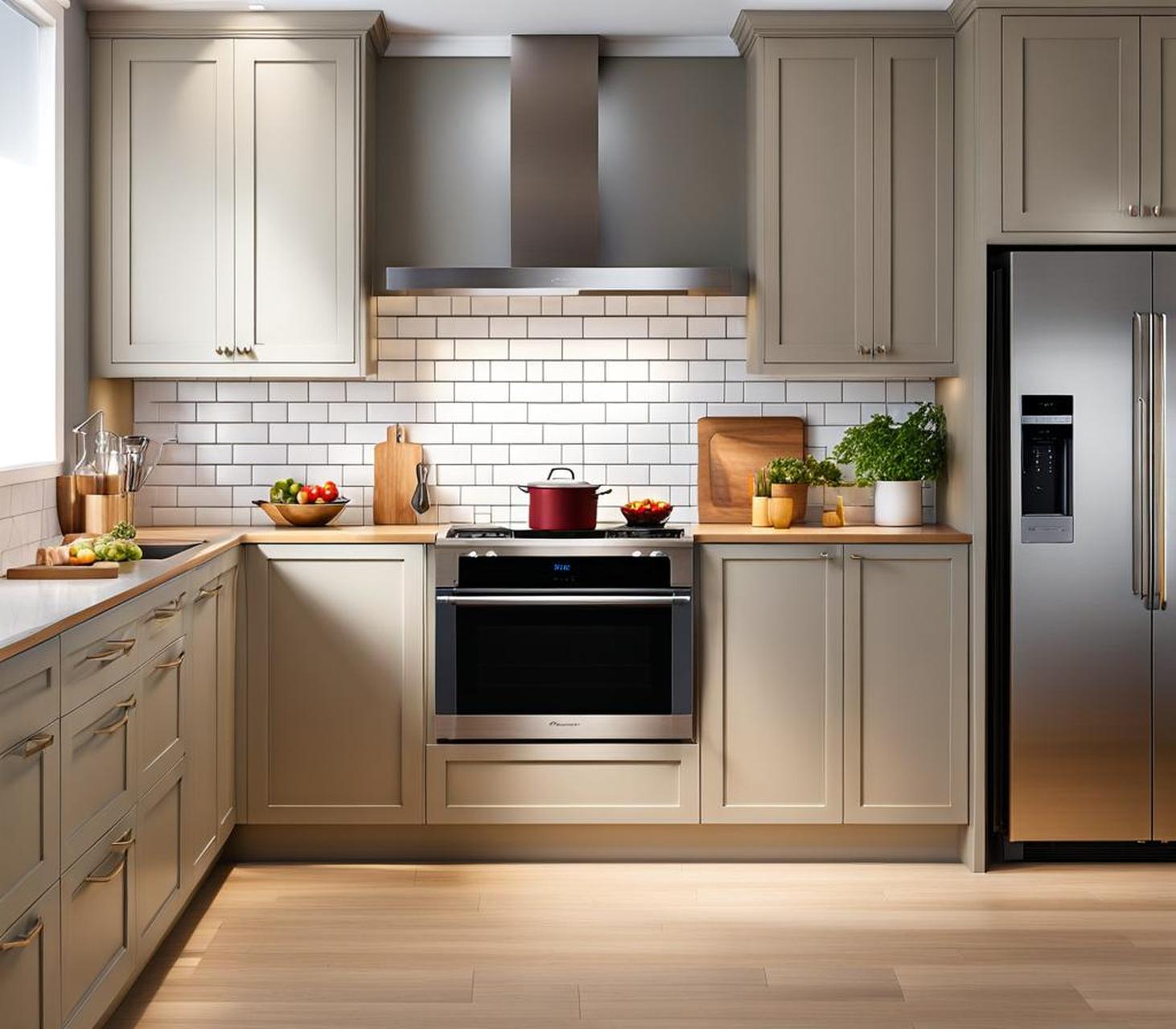Having a small kitchen with limited space can make cooking feel like a chore. However, by installing a compact wall oven, you can maximize your tiny kitchen’s functionality and enjoy all the perks of a full-sized oven without sacrificing precious counter space.
When shopping for the ideal small wall oven, there are several key factors to consider so you end up with the perfect appliance for your needs and layout. Follow this comprehensive guide to help choose the right oven size, fuel type, design, features, and more for your petite cooking space.
Determine the Appropriate Oven Size
The first step is deciding what oven capacity you require. Standard wall ovens range from 24 to 27 inches wide. However, if your kitchen is extremely tight on space, you may want to look into built-in micro-wall ovens under 20 inches.
Take measurements of your existing cabinetry or oven cutout and choose a size that fits comfortably without dominating the room. Think about how much you typically bake or roast at once. Compact ovens work well for small households and those who don’t cook large meals regularly.
Consider Single vs. Double Wall Ovens
Another size consideration is whether to get a single or double wall oven. The main trade-off is oven capacity versus space savings. While two small ovens essentially double your cooking options, a single oven preserves more usable kitchen area.
If you love to host large dinner parties and cook multiple dishes at once, the increased capacity of a double may be worthwhile. But for everyday use, a single 24-inch oven is likely sufficient and less overwhelming in a tiny kitchen.

Decide on Fuel Source
Next, determine whether you want an electric or gas wall oven. This may depend on your existing kitchen hookups. While gas ovens allow more instant temperature control, modern electric ovens have nearly caught up in performance.
Many homeowners pair electric wall ovens with separate induction cooktops for a sleek, contemporary look. If you opt for a gas wall oven, ensure proper venting to the outside to safely remove fumes.
Compare Styles and Finishes
Wall ovens come in a range of styles to match your kitchen’s aesthetic. Stainless steel and black or white solid colors are classic oven finishes. You can also select a panel-ready oven with a blank trim to integrate seamlessly with surrounding cabinetry.
Consider a contemporary or traditional design. Narrow glass windows lend a modern, minimalist look while wider windows appear more traditional. Choose a finish that complements your existing decor rather than overwhelming it.
Understand Installation Needs
Wall ovens are designed to be installed directly into a wall or recessed into cabinetry. This may require enlarging your existing oven cutout. Ensure adequate spacing on all sides for ventilation. Moving gas or electric lines may also be necessary.
If your kitchen layout permits, situating the wall oven near the sink creates an efficient cooking triangle. Many homeowners prefer professional installation, but it is a DIY job for the prepared handyman.
Compare Special Features
Today’s wall ovens offer conveniences like convection cooking, self-cleaning modes, adjustable racks, touchscreen controls, meat probes, and more. Decide which features would get the most use or fill a need in your current cooking routine when making selections.
Options like convection fans and fast preheating make these small but mighty ovens perform beyond their size. Connected smart ovens also allow monitoring and control from your smartphone for added flexibility.
Research Reputable Brands
Stick with well-known, reliable brands like GE, Frigidaire, Samsung, Whirlpool, and Bosch when shopping for a wall oven. Compare warranties between manufacturers as this can give you peace of mind with your investment.
Additionally, customer ratings and reviews can provide insight into real-world longevity, ease of use, and service responsiveness of different oven models and companies.
Set a Realistic Budget
plan to spend $1,000 to $3,000 for the wall oven itself. More expensive ovens typically have greater capacities, more robust build quality and features like convection cooking. Professional installation, gas or electrical work will also add to the total cost. But the convenience and space savings make it a smart upgrade for tiny kitchens.
Choosing the perfect small wall oven enables you to maximize cooking functionality even in a tiny kitchen. Assess your needs in terms of capacity, design, and features. Measure your existing space carefully before selecting an appropriately sized model. With some planning, a wall oven can be a great fit, creating a kitchen that’s both stylish and workable despite limited square footage.
